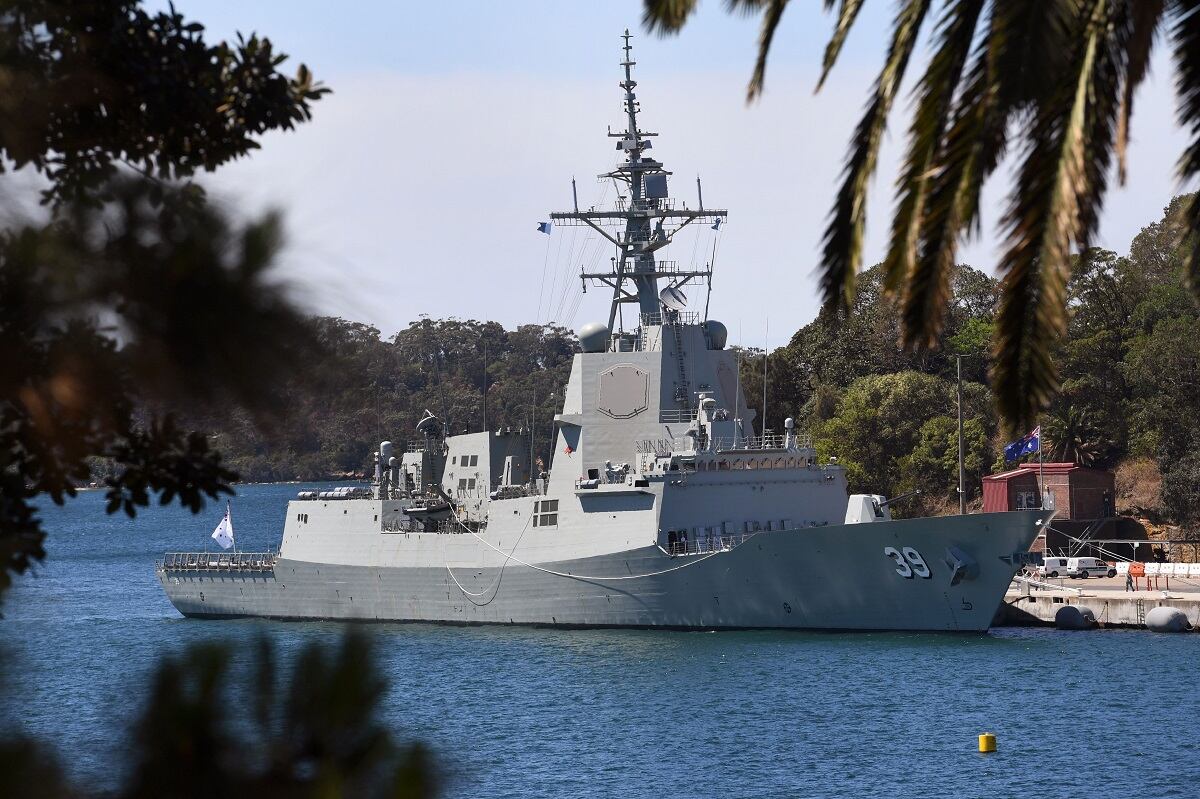MELBOURNE, Australia ― Australia will acquire nine high-end anti-submarine warfare frigates from the end of the next decade under a deal with BAE Systems worth AU$35 billion (U.S. $26 billion).
The announcement was formally made Friday at the ASC shipyard in Osborne, South Australia, by Prime Minister Malcolm Turnbull, Minister for Defence Marise Payne and Minister for Defence Industry Christopher Pyne.
A version of BAE Systems’ City-class Type 26 ASW frigate, now under construction for the British Royal Navy, will be acquired under Australia’s SEA 5000 Phase 1 project, also known as the Future Frigate Project.
Referred to as the Global Combat Ship―Australia, or GCS-A, during the competition, the design will be known as the Hunter-class in Royal Australian Navy service and will replace the Navy’s existing Anzac-class frigates.
There has been speculation in the media that the decision to go with BAE may be driven, in part, by Australia’s desire to secure strong terms with the U.K. as it negotiates a series of new trade agreements after Britain leaves the European Union.
Payne noted Friday that the GCS-A design was selected because it was the most capable ASW platform.
“This is a decision entirely based on capability, the best capability to equip the Navy in anti-submarine warfare,” she said.
Regardless, news of BAE’s win was welcomed in the United Kingdom, with Secretary of State for Defence Gavin Williamson referring to it as the “biggest maritime defence deal of the decade.”
“This £20 billion ‘deal of the decade’ demonstrates how British defence plays a huge role in creating jobs and prosperity and is ‘Global Britain’ in action,” he commented on social media. “Great to see our military and industrial links strengthen with Australia.”
The ships will be built by ASC Shipbuilding in South Australia, using local workers and Australian steel, under the Turnbull government’s continuous naval shipbuilding program.
“What we are doing here is announcing our commitment to build the nine Future Frigates,” Prime Minister Turnbull said. “The Hunter-class frigates will be the most advanced anti-submarine warships in the world.”

The Hunter-class frigates will be equipped with CEA Technologies-built CEAFAR phased array radar currently fitted to the Navy’s post-anti-ship missile defense Anzac frigates, together with Lockheed Martin’s Aegis combat system and an interface provided by Saab Australia.
The Aegis combat system was mandated for all of Australia’s major surface combatants by the Turnbull government in October 2017.
RELATED

The GCS-A design was selected in preference to Fincantieri’s Australian FREMM, dubbed FREMM-A, a variant of the ASW-optimized FREMM frigate now in service with the Italian Navy; and the F-5000 from Navantia, based on an evolution of the Royal Australian Navy’s Hobart-class air warfare destroyer, which in turn is a derivative of the Spanish Navy’s F-100 Álvaro de Bazán class.
An ASW capability was the highest priority for the Royal Australian Navy, according to Chief of Navy Vice Adm. Tim Barrett.
“I spoke as recently as last night to the First Sea Lord, my equivalent in the [British] Royal Navy, and I am assured by his comments on just how successful this platform will be as the world’s most advanced anti-submarine warfare frigate,” he said Friday.
The first steel is due to be cut on prototyping activities for the build at Osborne in late 2020, with full production following in 2022. The first ship of the class will be delivered to the Royal Australian Navy in the late 2020s.
Under the deal, the government-owned shipbuilder ASC will become a subsidiary of BAE Systems during the build, with the government retaining a sovereign share in the entity. The shipyard will revert to government ownership at the end of the project.
Turnbull said the arrangement ensures BAE Systems is fully responsible and accountable for the delivery of the frigates, noting that Australia retains the intellectual property and a highly skilled workforce at the end of the program.
“My expectation is that the next generation of frigates that comes after the ones we’re about to start building at ASC will be designed and built in Australia,” he said.
BAE System’s global maritime systems business development director, Nigel Stewart, told Defense News that he welcomes the build strategy.
“We were really pleased with that as an outcome because ASC has great capability. We always wanted to use the workforce, but this allows us to join ASC and BAE together much earlier, and we think that will be really positive,” he said.
Stewart said the plan was for the Hunter-class build to follow the Type 26 activity in the U.K. by around five years, which will serve to de-risk the Australian program. BAE is due to deliver the first ship, HMS Glasgow, to the British Royal Navy in 2025, with entry into service in the 2027 time frame.
“We cut steel for the first Type 26 in the U.K. in June 2017, and we’ll cut steel for full production of the Hunter class in South Australia in 2022,” he said. “We’ll run at an 18-month drumbeat in the U.K., and somewhere between 18 months and two years in Australia. That will keep a five-year gap, which is almost perfect. You are de-risking the Australian program in the U.K. and you don’t get the obsolescence issues you would if there was a longer gap, so it’s a really good program overlap.”
In other news Friday, the Turnbull government announced it will set up a AU$670 million training and capability center for the Hunter-class frigates in Western Australia.
Known as Ship Zero, the initiative will be established at HMAS Stirling, the Navy’s Fleet Base West, at the shipbuilding facility in Henderson. Much of the training traditionally performed at sea will be transferred into the land-based facility.
The capital works project will be considered by the Australian Parliament early next year, and construction is expected to commence in 2019.
Nigel Pittaway is the Australia correspondent for Defense News.








